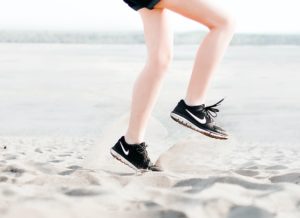14 April 2022
Sprains and strains happen frequently and all too easily. If you have experienced these, you probably have heard of R.I.C.E., Rest, Ice, Compression, and Elevation. If you have significant pain or swelling, or your symptoms worsen, seek medical attention.
Here is how the R.I.C.E. principle works.
Rest
Pain tells you something is wrong. As soon as you begin to hurt, stop. Continuing with your activities can make the situation far worse and extend recovery time. Rest as much as possible for at least the first two days following the incident. If any part of your leg is hurt, don’t put any weight on it for a day or two. Coaches like to tell you to work through the pain, but they are not the ones suffering or risking permanent damage.
Ice
An application of ice will reduce pain and swelling. Use an ice pack or ice cubes (or a pack of frozen vegetables if you are feeling wasteful) wrapped in a towel. Do not apply the cold surface directly to your skin or you could risk frostbite. Use this 20 minutes on and 20 minutes off for the first 24 hours. If the swelling persists, seek medical advice.
Compression
Using an elastic bandage that you can get at almost any drug store, wrap the area snug but not tight. If it is too tight, loosen it or replace the bandage. Too much pressure will interfere with proper blood flow, which is necessary to maintain healthy tissue and the blood to oxygenate the damaged tissue to promote healing. If the symptoms don’t go away quickly, head to urgent care.
Elevation
Keep the injured area at rest in a position higher than your heart, like placing a sprained ankle on a pillow as you lay on the sofa. This is appropriate even when you are not applying ice. This will ease the discomfort and reduce swelling.
Your medical professional may also recommend an anti-inflammatory pain reliever like ibuprofen or naproxen.
Not all injuries are appropriate for the R.I.C.E. Treatment. There is another option called M.E.A.T., Movement, Exercise, Analgesics, and Treatment. This theory increases blood flow that will help accelerate the healing. Using a damaged tendon or ligament can increase the chances of another injury or leaving you with a chronic condition.

Movement
Using movement to put gentle pressure on the ligament will allow the new tissue to organize itself properly. It also increases the blood flow to flush any impurities away from the area. In this case, more is not better. Too much too soon will only delay recovery.
Exercise
Exercise is designed to further increase the blood flow to foster complete healing. Although it is tempting to push to full activity, stick to the plan established by your medical team to avoid re injury or permanent damage.
Analgesics
There are many foods that provide a natural relief from minor pain. These include ginger, turmeric, capsaicin and others. One dose is probably not going to do the job. Work with your medical team and nutritionist to develop a solid eating plan to help restore your muscles and tissues.
Treatment
Seeking prompt medical attention and implementing the right treatments is the best option.
Every injury and every individual is different and it takes a professional to personalize your treatment plan and strategy.
